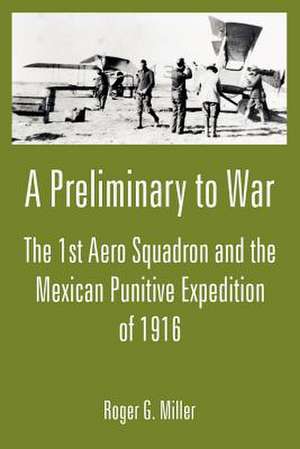A Preliminary to War: The 1st Aero Squadron and the Mexican Punitive Expedition of 1916
Autor Roger G. Milleren Limba Engleză Paperback – 31 mar 2005
| Toate formatele și edițiile | Preț | Express |
|---|---|---|
| Paperback (2) | 63.62 lei 6-8 săpt. | |
| Lulu.Com – 22 feb 2013 | 63.62 lei 6-8 săpt. | |
| University Press of the Pacific – 31 mar 2005 | 105.08 lei 6-8 săpt. |
Preț: 105.08 lei
Nou
Puncte Express: 158
Preț estimativ în valută:
20.11€ • 20.99$ • 16.60£
20.11€ • 20.99$ • 16.60£
Carte tipărită la comandă
Livrare economică 15-29 aprilie
Preluare comenzi: 021 569.72.76
Specificații
ISBN-13: 9781410222626
ISBN-10: 1410222624
Pagini: 68
Dimensiuni: 152 x 229 x 4 mm
Greutate: 0.11 kg
Editura: University Press of the Pacific
Locul publicării:United States
ISBN-10: 1410222624
Pagini: 68
Dimensiuni: 152 x 229 x 4 mm
Greutate: 0.11 kg
Editura: University Press of the Pacific
Locul publicării:United States










